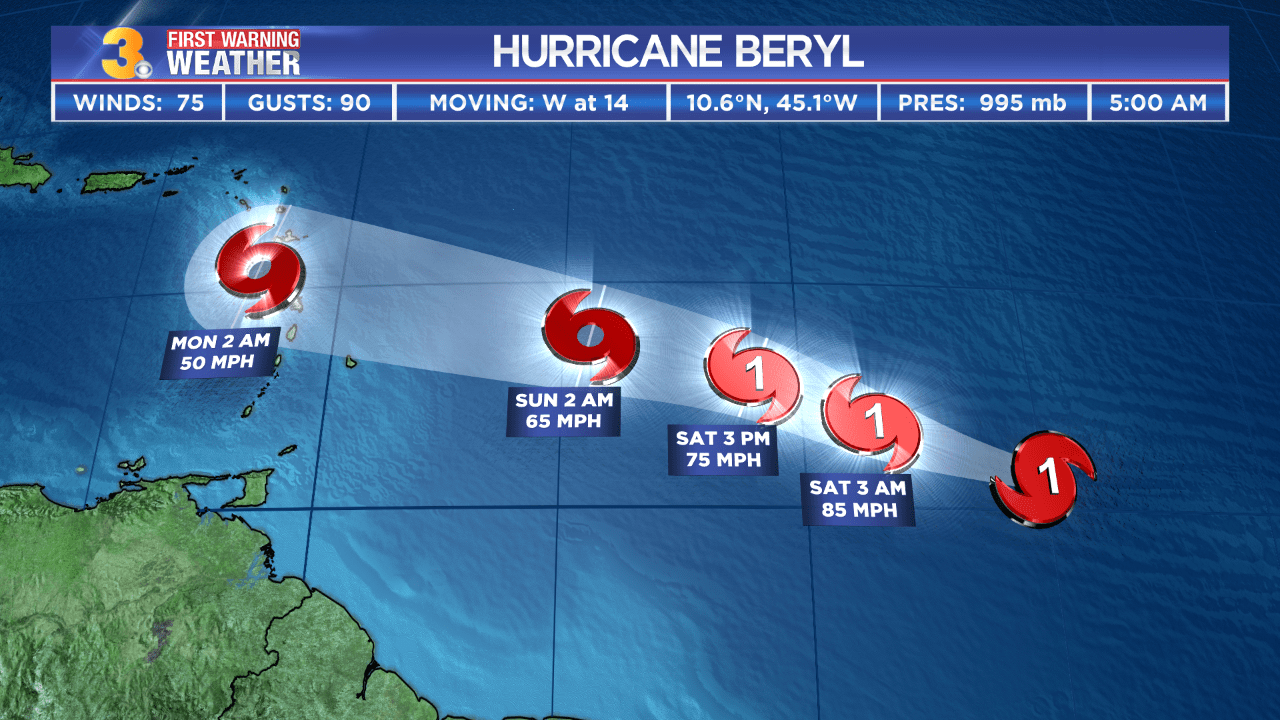Hurricane Beryl’s Impact on Jamaica

Hurricane beryl jamaica – Hurricane Beryl, a Category 1 hurricane, made landfall in Jamaica on July 5, 2023, bringing heavy rainfall, strong winds, and flooding to the island. The hurricane caused widespread damage, particularly in the eastern and central regions of Jamaica.
Areas Most Severely Affected
The areas most severely affected by Hurricane Beryl were the parishes of St. Thomas, Portland, and St. Mary. These areas experienced the strongest winds and heaviest rainfall, leading to extensive flooding and landslides.
Impact on Infrastructure
Hurricane Beryl caused significant damage to Jamaica’s infrastructure. Roads and bridges were washed out, power lines were downed, and water supplies were disrupted. The hurricane also damaged several schools and hospitals.
Impact on Homes and Businesses
Hurricane Beryl also caused widespread damage to homes and businesses in Jamaica. Many homes were destroyed or damaged, and businesses were forced to close due to the hurricane. The hurricane also caused significant damage to the island’s tourism industry.
Jamaica’s Response to Hurricane Beryl: Hurricane Beryl Jamaica

Jamaica implemented comprehensive emergency measures to mitigate the impact of Hurricane Beryl. The government activated its National Emergency Operations Centre (NEOC) to coordinate response efforts, while the Office of Disaster Preparedness and Emergency Management (ODPEM) led the distribution of relief supplies.
Local communities played a crucial role in disaster relief. Community leaders organized evacuation efforts, provided shelter to displaced residents, and distributed food and water. The strong sense of community and resilience among Jamaicans was evident throughout the response.
Challenges in Providing Aid and Support, Hurricane beryl jamaica
Providing aid and support to affected areas presented several challenges. Impassable roads and damaged infrastructure hindered the delivery of essential supplies, while heavy rainfall and flooding posed additional obstacles. Additionally, the need to maintain social distancing protocols due to the COVID-19 pandemic required modifications to relief efforts.
Long-Term Recovery and Resilience

Jamaica’s recovery from Hurricane Beryl involves rebuilding infrastructure, restoring livelihoods, and enhancing resilience against future storms. The government has allocated funds for reconstruction efforts, including repairing damaged homes, schools, and hospitals.
To improve resilience, Jamaica is implementing measures such as strengthening building codes, improving drainage systems, and promoting disaster preparedness education. The country is also working with international organizations to access technical and financial assistance for long-term recovery and resilience-building initiatives.
Lessons Learned
Hurricane Beryl highlighted the importance of early warning systems, evacuation plans, and community preparedness. The government is reviewing emergency response protocols and working to improve communication and coordination during future disasters.
The storm also exposed the vulnerability of coastal communities and the need for coastal protection measures. Jamaica is exploring options for constructing seawalls, restoring mangroves, and implementing other nature-based solutions to mitigate the impact of future hurricanes.